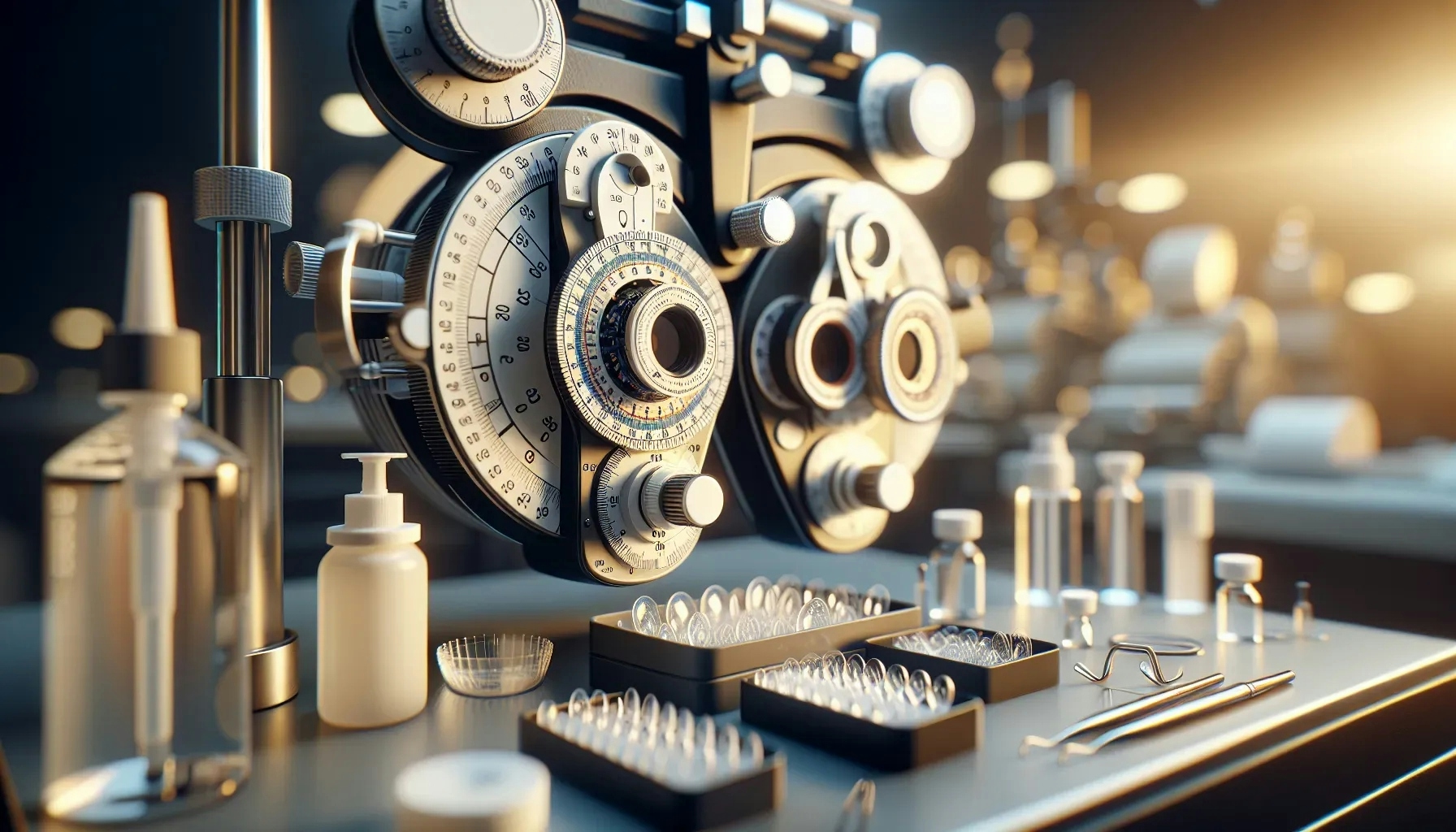What Approaches Improve Patient Satisfaction With Multifocal Contact Lenses?
Optometry Magazine

What Approaches Improve Patient Satisfaction With Multifocal Contact Lenses?
Optometry professionals are key in enhancing patient satisfaction with multifocal contact lenses, employing strategies that range from personalized prescriptions to the latest in lens technology. An Optometrist emphasizes the importance of tailoring prescriptions to individual needs, while additional answers delve into a variety of approaches, including the use of digital tools and the value of patient feedback. Together, these insights form a spectrum of methods to ensure patients not only see clearly but also feel fully supported in their vision care journey.
- Tailor Prescriptions to Individual Needs
- Utilize Digital Fitting Tools
- Offer Multifocal Lens Trial Periods
- Distribute Lens Care Educational Materials
- Listen to Patient Feedback for Adjustments
- Update Lens Selection with Latest Technology
Tailor Prescriptions to Individual Needs
As experienced optometrists, we recognize the significance of tailoring multifocal contact lens prescriptions to suit each patient's unique visual requirements. One effective approach involves starting with the vertex-adjusted power based on the manifest refraction. If necessary, we adjust the power in the non-dominant eye to optimize near vision. When starting, I use this chart as a guide for fitting the ADD power according to age and eye dominance.
Chart of Add power based on age (Try to keep the Dominant ADD as low as possible)
- Age: 40-44, ADD for Dominant Eye: Low, ADD for Non-Dominant Eye: Low
- Age: 45-49, ADD for Dominant Eye: Low, ADD for Non-Dominant Eye: Medium
- Age: 50-54, ADD for Dominant Eye: Low or Medium, ADD for Non-Dominant Eye: High
- Age: 55-60+, ADD for Dominant Eye: Medium or High, ADD for Non-Dominant Eye: High
I recommend over-refracting with loose lenses, gradually increasing by +0.25 diopters at a time in the non-dominant eye while having the patient keep both eyes open until achieving the best possible near vision. Once the optimal binocular near visual acuity is determined in the non-dominant eye, hold that selected loose lens over it while checking distant vision. (For instance, if the non-dominant eye requires +0.50DS for optimal near vision, hold the +0.50 loose lens over that eye while checking binocular distance visual acuity.) This step ensures that the added plus power does not significantly compromise distance vision. If distance vision is compromised, consider reducing the plus power and educate the patient that a slight monovision approach may be necessary to achieve the best possible clarity.
This meticulous approach allows for precise fine-tuning of the prescription, ensuring maximum visual acuity and patient satisfaction.
It's worth noting that this method is beneficial even for patients with low astigmatism. By considering the overall spherical equivalent power required for both distance and near vision, outstanding results can still be achieved with multifocal contact lenses. This comprehensive approach ensures that each patient receives personalized care tailored to their specific visual needs, leading to enhanced satisfaction and success with multifocal lenses.

Utilize Digital Fitting Tools
Incorporating digital fitting tools can significantly enhance the accuracy of multifocal contact lens prescriptions. These tools allow for precise measurements of the eye's curvature and refractive errors. The result is contact lenses that fit better and offer clearer vision, which greatly contributes to patient satisfaction.
Moreover, precise fitting can reduce discomfort and the need for multiple adjustments. Encourage eye care specialists to utilize digital fitting technology for more satisfied patients.
Offer Multifocal Lens Trial Periods
Providing trial periods for new multifocal contact lens wearers can be extremely beneficial. It allows patients to test the lenses in their daily life, which can ease the adaptation process to the different visual zones. During this period, professionals can support them with tips on how to get the most out of their lenses.
Adjustments can also be made based on the wearer's experiences. Recommend a trial period to ensure the lenses meet the wearer's expectations before fully committing.
Distribute Lens Care Educational Materials
Educational materials that instruct new wearers on proper lens care can lead to improved satisfaction. This information helps prevent infections and maintain lens quality, which is central to a comfortable and effective contact lens experience. Clear, concise guides help users understand the do's and don'ts of lens maintenance.
Properly educated patients are likely to enjoy a more positive experience with their lenses. Make sure to distribute lens care guides to all new multifocal contact lens patients.
Listen to Patient Feedback for Adjustments
Taking the time to listen to patient feedback about their multifocal lenses can guide personalized adjustments. This creates a tailored experience for the wearer, potentially improving vision and comfort. Professional responsiveness to concerns or dissatisfaction can foster trust and lead to better patient-provider relationships.
A patient who feels heard is likely to be a more satisfied one. Ask patients for their honest feedback and use it to fine-tune the fitting process.
Update Lens Selection with Latest Technology
Regularly updating the selection of available multifocal contact lenses with the latest technology can provide patients with top-notch options. Innovations often mean improved comfort, clearer vision, and easier care routines for the lenses. Staying on top of industry advancements keeps offerings fresh and competitive, which can impress and retain patients.
Lens wearers typically appreciate the commitment to quality improvement. Introduce patients to the newest lens technologies to enhance their optical experience.